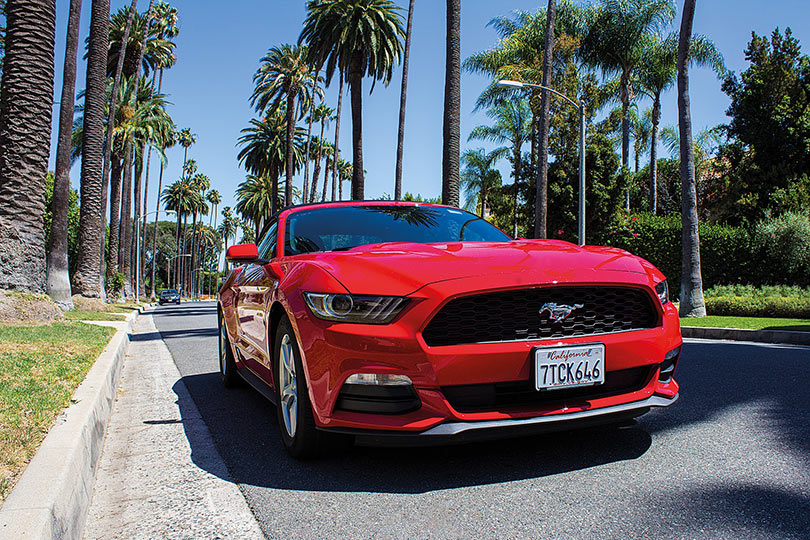When Was Ford Founded? Origin & History
-
Codee Chessher
- Last updated:

Ford has a long and storied history, making some of the most recognizable early automobiles and constantly pushing the envelope throughout the years. Henry Ford first founded the Henry Ford Company in 1901, but this company was reorganized into the Cadillac Automobile Company. The Ford we know and love today is the Ford Motor Company, which Henry Ford established and incorporated in 1903. Let’s check out some more fascinating info about how Ford started and evolved throughout its history.
Ford in the Early 1900s
After Henry Ford walked away from the Cadillac Automobile Company with the rights to his name, he created the Ford Motor Company in the Ford Mack Avenue plant in Detroit. This factory would only produce the original Model A, C, and AC for the one year it was used.
In 1904, Ford moved its operations to a plant on Piquette Avenue, where the iconic Model T was conceived and produced. Within a year, the company made $250,000 in profit. Despite this wild success, tensions simmered between Henry Ford and an investor, Alexander Malcomson.

Malcomson believed luxury cars were the future of automobiles and forced Ford to create the higher-end Models B and K. Unsatisfied, Malcomson even formed a second company, Aerocar, to directly compete with Ford and essentially hedge his bets.
Henry Ford and other Ford board members were understandably upset by this and tried to get Malcomson to sell his shares. When he refused, Henry Ford formed a separate company to supply Ford Motor Company with parts, called the Ford Manufacturing Company. By selling parts to the main company at an inflated rate, Ford rendered FCM profitless. Malcomson promptly sold his shares to Ford for $175,000 in 1906.
By the early 1910s, Ford had facilities in 6 European countries. Most notably, Henry Ford revolutionized the industry by developing the world’s first automated assembly line. He also standardized the 8-hour workday and increased wages so that his workers could afford their own cars.
By the time World War I broke out, Henry Ford produced half of all American cars and nearly half of the cars in England. During the war, Henry Ford and the FCM produced many cars for the US military.
By 1922, Ford still enjoyed great success, but the company wanted in on the luxury car market. To achieve this, Ford bought Lincoln Motor Company, which is still owned and operated by Ford to this day.

Ford in the Mid and Late 1900s
After the US got involved in WWII after Pearl Harbor, Ford had the largest production facility in the world. They dedicated their focus on producing Jeeps, bombers, and even tanks for the US military.
In 1947, Henry Ford died of a cerebral hemorrhage in his Dearborn home. Allegedly, over 7 million people paid their respects at his funeral. Shortly after in 1948, Ford introduced their first F-series truck, which is still one of the best-selling vehicles today.
In the 1950s, Ford created some of the most recognizable car models under the leadership of Lee Iacocca, like the Mustang and the widely-maligned Pinto. Despite his cars selling extremely well and turning over $2 billion in profit, Iacocca was forced out of the company by Henry Ford II in 1978.
By this time, Ford was looking to expand their international market and decided to make investments in other carmakers. In 1979, Ford bought a quarter of the shares in Mazda, in 1987 acquired Aston Martin, and in 1989 acquired Land Rover and Volvo. They actually saved Mazda from bankruptcy in 1996 but sold those shares in 2015. Also of note in the 90s was the introduction of the Ford Explorer, which went on to be a best-selling SUV.

Ford in the 2000s and Today
The 2000s brought new problems for the legendary automaker, despite celebrating its 100th birthday with commemorative editions of cars. Soon after in 2006, Ford sold several of its brands: Land Rover, Aston Martin, and Jaguar.
As technology and popular demand called for more green cars, Ford engineered the EcoBoost engine to maximize fuel efficiency in 2009. The engine was very popular and included in numerous Ford vehicles, most notably the F-150 and Ford Fusion. In fact, the Fusion became a huge hit and even topped the Toyota Camry and Honda Accord in ratings from JD Power.
Their first foray into electric vehicles was also in 2009 when they debuted the Ford Focus BEV. Their electric lineup was lackluster during this period, although they did make significant headway into EV technology.
Today, Ford is making a huge comeback as of 2021, when they announced the largest investment ever into electric vehicles: $11.4 billion. Ford plans to build two mega-sites in Tennessee and Kentucky, where next-generation batteries and EVs will be produced with their partner, SK Innovation.
Ford announced that it plans to have 40% of its total sales volume be electric by 2030, and formally separated its EV operations from its combustion vehicle operations. By making these investments and pursuing EV tech, Ford could be one of the biggest EV makers by 2040, or possibly earlier.
Conclusion
Ford Motor Company has a long, colorful history full of conflict (quite literally at some points!), but the automaker is still going strong with its plans to prioritize electric vehicles in the near future. Although Henry Ford died in 1947, he left his pioneering spirit of innovation with his company.
- See also: Are Ford Escapes Reliable? Facts & FAQ
Featured Image Credit: Alex Blăjan, Unsplash
Contents
